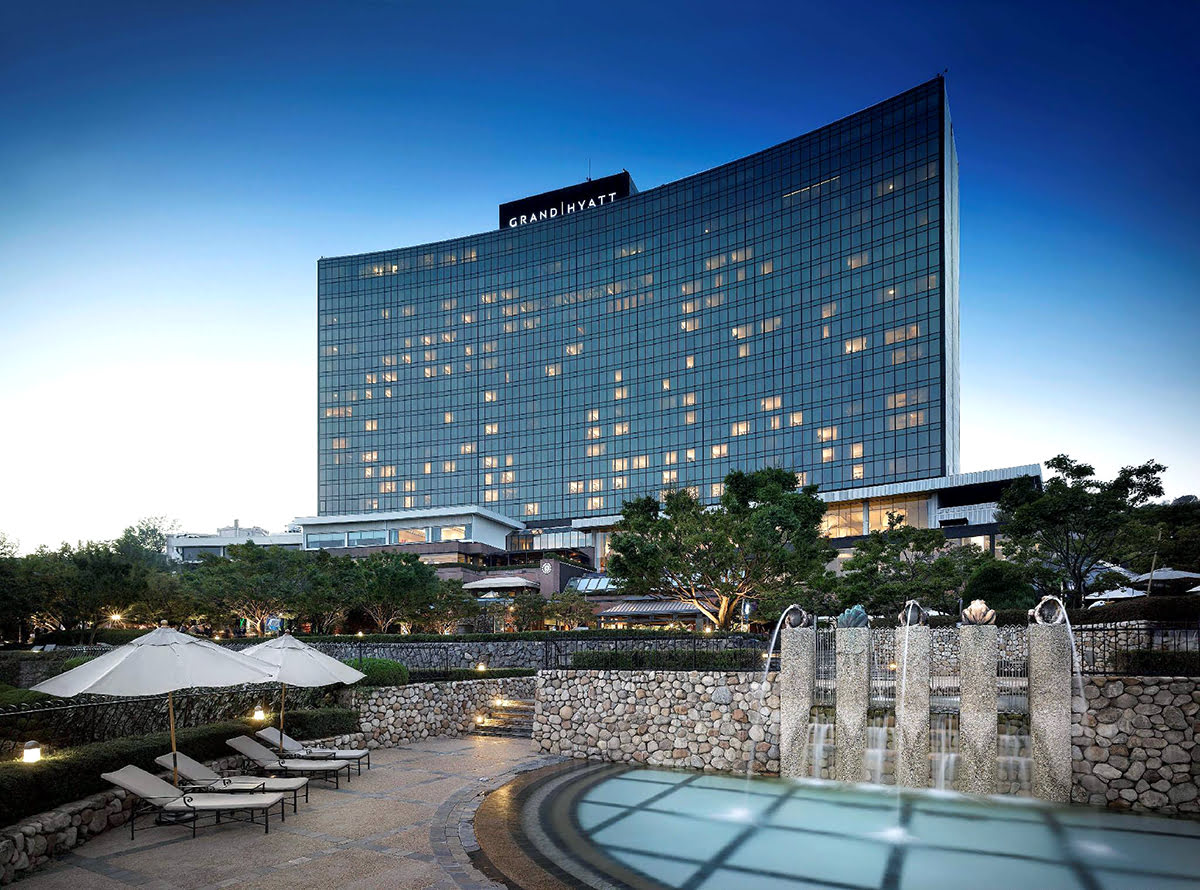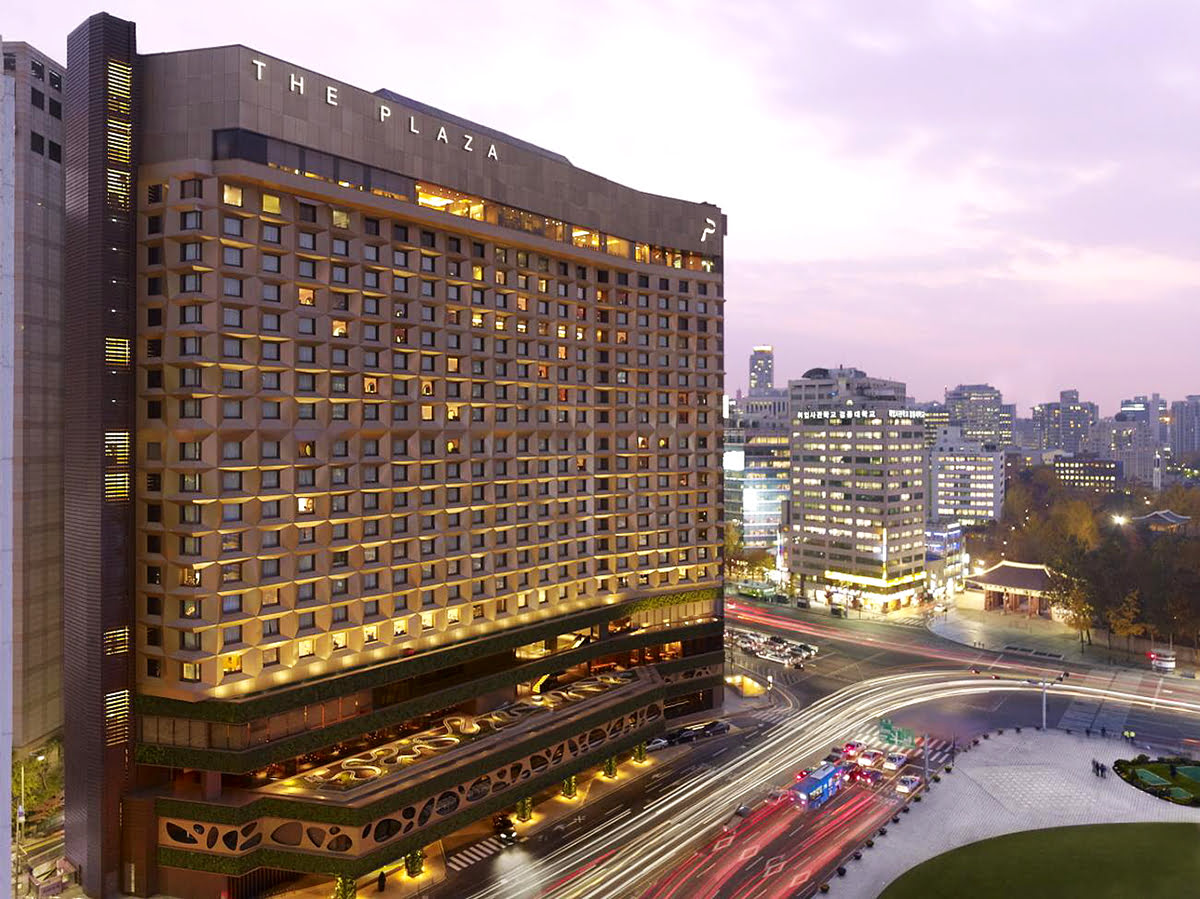
Seoul, a city where ancient palaces whisper tales of dynasties past and neon lights pulse with the rhythm of the future, is a traveler’s dream. From its rich historical tapestry to its cutting-edge modernity, the South Korean capital offers an experience unlike any other. And at the heart of this captivating metropolis lies its exceptional hospitality, embodied by its world-class hotels. This article delves into the top hotels in Seoul, weaving in the city’s history, enticing attractions, practical travel tips, the ideal times to visit, tantalizing local cuisine, and the seamless transportation networks that connect it all.
A Glimpse into Seoul’s Storied Past:
Seoul’s journey from a humble Joseon Dynasty capital to a global powerhouse is a testament to its resilience and dynamism. Founded in 1392, Seoul, then known as Hanyang, served as the seat of power for over 500 years. Remnants of this glorious era are scattered throughout the city, from the majestic Gyeongbokgung Palace, the largest of Seoul’s Five Grand Palaces, to the charming Bukchon Hanok Village, a living museum of traditional Korean houses. The city weathered invasions, colonial rule, and the Korean War, each challenge forging a stronger, more determined spirit. This historical depth is palpable, adding a layer of profound meaning to any visit.
Related Articles about Seoul’s Crown Jewels: A Guide to the City’s Top Hotels and the Heartbeat of the Metropolis:
- Hungary: A Journey Through History, Culture, and Unforgettable Landscapes
- Geneva: A Jewel on the Lake – Your Comprehensive Guide
- Zurich: A Luxurious Tapestry Woven with History, Culture, and Indulgence
- Santorini: A Celestial Guide to the Aegean’s Crown Jewel
- Zurich: A Comprehensive Travel Guide to Switzerland’s Vibrant Metropolis
Seoul’s Magnetic Pull: Main Attractions:
Seoul is a city that caters to every whim. For history buffs, the Five Grand Palaces (Gyeongbokgung, Changdeokgung, Changgyeonggung, Deoksugung, and Gyeonghuigung) are essential. Witnessing the changing of the guard ceremony at Gyeongbokgung is a must-do. The National Museum of Korea offers a comprehensive journey through Korean art and history, while the War Memorial of Korea provides a poignant and educational insight into the nation’s past.
For those seeking a taste of modern Seoul, the vibrant districts of Myeongdong and Hongdae are unmissable. Myeongdong is a shopper’s paradise, brimming with cosmetics, fashion, and street food. Hongdae, on the other hand, pulsates with youthful energy, showcasing indie music, street art, and quirky cafes. The iconic N Seoul Tower on Namsan Mountain offers breathtaking panoramic views of the city, especially at sunset. For a serene escape, the Jongmyo Shrine, a UNESCO World Heritage site, offers a tranquil atmosphere dedicated to the ancestral rites of the Joseon Dynasty. And no trip to Seoul is complete without a visit to the DMZ (Demilitarized Zone), a stark reminder of the Korean Peninsula’s division, offering a unique and thought-provoking experience.
Finding Your Sanctuary: Top Hotels in Seoul:
Seoul’s hotel scene is as diverse and sophisticated as the city itself, offering everything from opulent five-star experiences to stylish boutique stays. Here are some of the top contenders, catering to various preferences:
-
The Shilla Seoul: A true icon of luxury, The Shilla Seoul embodies elegance and impeccable service. Nestled in a serene garden setting, it offers a tranquil oasis amidst the urban bustle. Its rooms and suites are sumptuously appointed, and its dining options are legendary, including the Michelin-starred La Yeon. The hotel also boasts a world-class spa and an impressive collection of Korean art. It’s the perfect choice for those seeking an unforgettable, indulgent experience.
-
Four Seasons Hotel Seoul: Situated in the heart of the bustling Jongno district, the Four Seasons Hotel Seoul is synonymous with contemporary luxury and exceptional service. Its stylish rooms and suites offer stunning city views, and its dining establishments, from the Michelin-starred Kioku to the vibrant Charles H. bar, are renowned. The hotel’s prime location makes it ideal for exploring nearby palaces and shopping districts.
-
Signiel Seoul: Located within the Lotte World Tower, one of the world’s tallest buildings, Signiel Seoul offers unparalleled views and a truly aspirational stay. This ultra-luxury hotel provides an experience of elevated living, with exquisitely designed rooms, a Michelin-starred restaurant (STAY), and an impressive array of amenities. For those who crave breathtaking vistas and a sense of being on top of the world, Signiel Seoul is the ultimate choice.
-
Park Hyatt Seoul: Perched atop a skyscraper in the affluent Gangnam district, the Park Hyatt Seoul offers a sophisticated and intimate luxury experience. Its minimalist design, spacious rooms with floor-to-ceiling windows, and personalized service create a sense of refined exclusivity. The hotel’s location in Gangnam provides easy access to upscale shopping, dining, and entertainment.
-
The Westin Chosun Seoul: A historic landmark in its own right, The Westin Chosun Seoul seamlessly blends classic elegance with modern amenities. Located near major attractions like Gwanghwamun Square and the City Hall, it offers a convenient and comfortable base for exploring the city. Its well-appointed rooms and diverse dining options cater to a wide range of guests.
-
Conrad Seoul: Situated in the prestigious Yeouido business district, Conrad Seoul offers sleek, contemporary design and stunning Han River views. The hotel is known for its exceptional service, spacious rooms, and a variety of dining options, including the popular 10 Guksu (noodle house) and the sophisticated Aqua bar. It’s a great option for both business and leisure travelers.
-
Lotte Hotel Seoul: A sprawling complex in the heart of Myeongdong, Lotte Hotel Seoul is a popular choice for its prime location and extensive facilities. It offers a wide range of room types, from standard to deluxe suites, and boasts numerous restaurants, shops, and a duty-free store. Its vibrant atmosphere and convenient access to shopping make it a top pick for many.
Navigating the Metropolis: Travel Tips for Seoul:
- Connectivity is Key: Purchase a local SIM card or a portable Wi-Fi device upon arrival. Free Wi-Fi is widely available, but having your own connection ensures seamless navigation and communication.
- Embrace Public Transport: Seoul’s subway system is extensive, efficient, and incredibly easy to use. Purchase a T-money card for easy tap-and-go travel on subways and buses.
- Learn Basic Korean Phrases: While many Koreans speak English, especially in tourist areas, knowing a few basic phrases like "Annyeonghaseyo" (Hello), "Gamsahamnida" (Thank you), and "Juseyo" (Please give me) will be greatly appreciated.
- Download Essential Apps: Kakao Maps and Naver Maps are indispensable for navigation, as Google Maps has limited functionality in South Korea. Papago is a highly recommended translation app.
- Respect Local Customs: Be mindful of etiquette, such as removing your shoes before entering homes and some restaurants, and bowing slightly when greeting elders.
- Cash is Still Useful: While credit cards are widely accepted, it’s always good to have some Korean Won (KRW) on hand for smaller vendors and street food stalls.
- Stay Hydrated: Especially during warmer months, carry a water bottle.
The Sweet Spot: Best Time to Visit Seoul:
Seoul experiences four distinct seasons, each offering a unique charm:
- Spring (March-May): This is arguably the most popular time to visit. The weather is mild and pleasant, and the city bursts into a riot of color with blooming cherry blossoms and other flowers. Expect vibrant festivals and outdoor activities.
- Autumn (September-November): Another ideal season, autumn offers crisp air, clear skies, and stunning foliage. The vibrant hues of red, orange, and yellow transform the city’s parks and mountains into breathtaking landscapes.
- Summer (June-August): Summers in Seoul can be hot and humid, with a chance of monsoon rains. However, this is also a time for lively festivals and vibrant nightlife. Be prepared for the heat and humidity.
- Winter (December-February): Winters are cold and can be snowy. While chilly, it offers a magical atmosphere with festive decorations and opportunities for winter sports. The city’s indoor attractions, like museums and cafes, are perfect for escaping the cold.
Beyond the Hotel Gates: Nearby Attractions to Your Top Stays:
The beauty of Seoul’s top hotels is their strategic locations, placing you within easy reach of numerous attractions:
- The Shilla Seoul: Close to Jangchung Park, Dongdaemun Design Plaza (DDP), and the War Memorial of Korea.
- Four Seasons Hotel Seoul: In the heart of Gwanghwamun Square, offering proximity to Gyeongbokgung Palace, Changdeokgung Palace, and the National Museum of Korea.
- Signiel Seoul: Within the Lotte World complex, providing immediate access to Lotte World Theme Park, Lotte Department Store, and Seokchon Lake.
- Park Hyatt Seoul: In Gangnam, near upscale shopping areas like Garosu-gil and Apgujeong Rodeo Street, as well as entertainment venues.
- The Westin Chosun Seoul: Walking distance to Gwanghwamun Square, Deoksugung Palace, and the Seoul City Hall.
- Conrad Seoul: Located in Yeouido, offering easy access to the 63 Building, Hangang Park, and the National Assembly Building.
- Lotte Hotel Seoul: Situated in Myeongdong, making it a stone’s throw away from the bustling shopping streets, Namsan Hanok Village, and Namdaemun Market.
A Culinary Odyssey: Savoring Local Flavors:
Seoul is a gastronomic paradise, and experiencing its food scene is an integral part of the travel experience.
- Kimchi: The national dish, a fermented cabbage staple, comes in countless varieties.
- Bibimbap: A colorful and hearty dish of rice mixed with vegetables, meat, and a fried egg, often served with gochujang (chili paste).
- Korean BBQ (Gogigui): Grilling marinated meats like bulgogi (marinated beef) and galbi (marinated ribs) at your table is a quintessential Korean dining experience.
- Tteokbokki: Spicy rice cakes, a popular street food, often enjoyed with fish cakes and boiled eggs.
- Samgyeopsal: Grilled pork belly, a beloved and often casual dining experience.
- Sundubu Jjigae: A spicy soft tofu stew, perfect for a comforting meal.
- Street Food: Don’t miss the vibrant street food scene in Myeongdong and Gwangjang Market, offering everything from hotteok (sweet pancakes) to odeng (fish cakes).
Seamless Journeys: Transportation Options in Seoul:
Seoul boasts an incredibly efficient and well-connected transportation network:
- Subway: The most efficient and affordable way to get around. The system is extensive, clean, and easy to navigate with English signage.
- Buses: A complementary network to the subway, buses cover areas not reached by rail and are also very efficient.
- Taxis: Readily available and relatively affordable, especially for shorter distances or late at night. There are standard, deluxe, and international taxis.
- KTX (Korea Train Express): For intercity travel, the KTX offers high-speed rail services to other major cities in South Korea.
- Incheon International Airport (ICN) and Gimpo International Airport (GMP): Both airports are well-connected to the city center via express trains (AREX), buses, and taxis.
Seoul is a city that captivates, inspires, and leaves an indelible mark on every visitor. From its ancient roots to its futuristic skyline, and from its luxurious hotels to its vibrant street life, it offers an experience that is both enriching and exhilarating. By understanding its history, embracing its attractions, and navigating its efficient systems, travelers can truly unlock the magic of this dynamic metropolis. The top hotels in Seoul are not just places to rest your head; they are gateways to experiencing the very essence of this extraordinary city.








